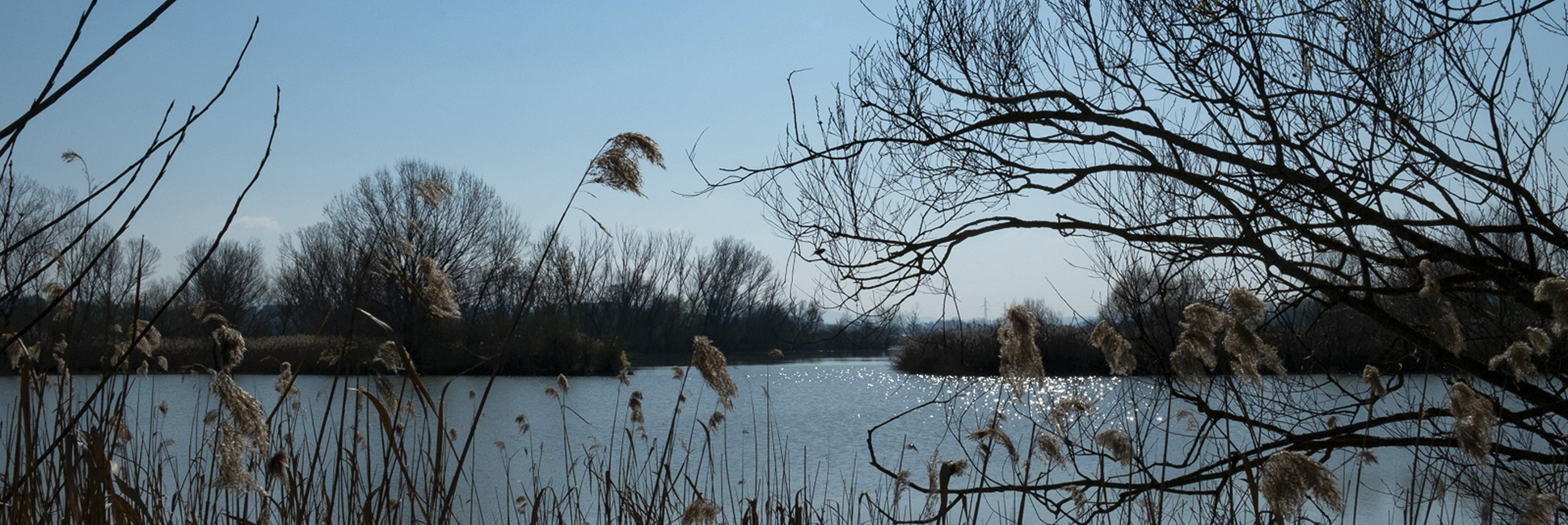The Sentiero della Bonifica
In the name of man and nature
To travel slowly along the Canale Maestro della Chiana [Master Canal of the Chiana area] between Siena and Arezzo signifies discovering the quality of a land which man’s genius has recuperated from out of the water. But not only. Etruscan civilization’s magical roots lie in the midst of this broad valley.
The Val di Chiana is an area in perpetual movement and the century-old land reclamation is a symbol of its continuous transformation.
Engineers, mathematicians, hydraulic experts, cartographers, agronomists and architects all collaborated in the land reclamation of this territory: from Leonardo da Vinci to the Arezzo born Vittorio Fossombroni, a brilliant technician who worked on the project for over 50 years, right up till his death in 1844. The Canale Maestro della Chiana is an historical hydraulic engineering achievement which even nowadays, plays an important role in this area.
You can cycle along a truly ‘noble’ pathway, shaped by man and by mother nature, working together in total harmony. A different concept of time is this cycle path’s essential factor, in the sense that the joy of going slowly is rediscovered and in the sense of travelling back through time to the distant and enigmatic past of the Etruscan civilization.
Thus, history but also nature makes up this border area of Tuscany where the mirror-like waters of the lakes of Chiusi and Montepulciano, rich in flora and in fauna, registered in the C.N.R [National Research Council] as important biotopes, represent an extremely interesting natural oasis for touring cyclists who are also bird watching enthusiasts.
In ‘Strade di Siena’ we present, in particular, the south part of the path, that unfolds between the villages called Chiusi and Foiano della Chiana.
Crossed Areas
A valley that was formed by man’s history, art, and ingenuity.
Legible traces left since prehistoric times, then by the Etruscans who have long dominated these lands and left exceptional testimonies not only in the necropolis, but also in towns and in extraordinary works like Porsenna’s labyrinth. Then medieval castles and fortresses softened by the flourishing of the arts in the Renaissance period: squares, streets and buildings which are easy to imagine lively and busy, a scenario of erudite discussions among humanists, merchants’ exchange, street artists and poets. A countryside changed through time which is now famous for its excellent products, such as fine wines and meats from a native breed of cattle over 2,000 years old and still rigorously and lovingly bred for the preservation of a real symbol of this land, the “white giant”.
The other characterizing element of Val di Chiana, inextricably linked to the origin of man and his history, is the water. Clear waters, lakes, mirrors in the sky for the Etruscans, residues in the marsh that characterized the valley and today are precious nature reserves. It is in reclaiming the marsh that man’s ingenuity was expressed to the maximum level, by transforming an inhospitable and unhealthy place into a very fertile valley, changing the territorial economy, the life and history of its inhabitants. The engineering and hydraulic interventions, the architectural decisions in the buildings in the era of land reclamation have also changed the landscape, characterizing it, making it somewhat unique.
The Montepulciano Lake is a lacustrine basin in the Valdichiana Senese, located downstream from the eponymous town, a few kilometres north-west of Lake Chiusi.
The lake is formed by the Canale Maestro della Chiana, which is both its tributary and emissary. The south-eastern bank of Montepulciano Lake marks the border between Tuscany and Umbria; about 15 km east of the lake basin, in Umbria, where there is Lake Trasimeno.
The nature reserve of Montepulciano Lake is a Protected Natural Area established in 1996. It includes Montepulciano Lake and some neighbouring areas, stretching over 470 hectares of land in the province of Siena.
